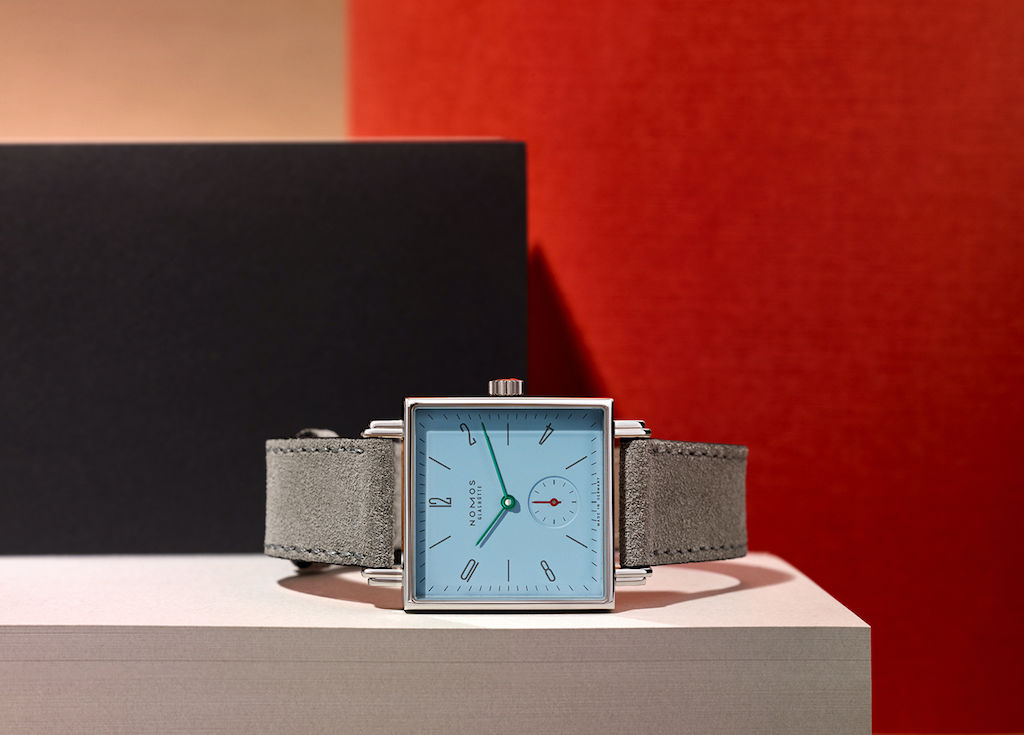Even though pictures are usually presented in rectangles, the fundamental shape of a square has long played a role in the world of art. But its time in the spotlight began only at the beginning of the 20th century—with Kazimir Malevich’s iconic “Black Square” (1915) marking the beginning of non-representational, abstract art. Artists such as Mark Rothko and Max Bill also made squares a focal point of their work, and the Bauhaus artist Josef Albers honored the shape with his 1959 series “Homage to the Square.” In fact, the square is an important part of the Bauhaus theory of color and form: Johannes Itten and Wassily Kandinsky paired each primary color with a particular fundamental shape—the circle with blue, the triangle with yellow, and the square with red.
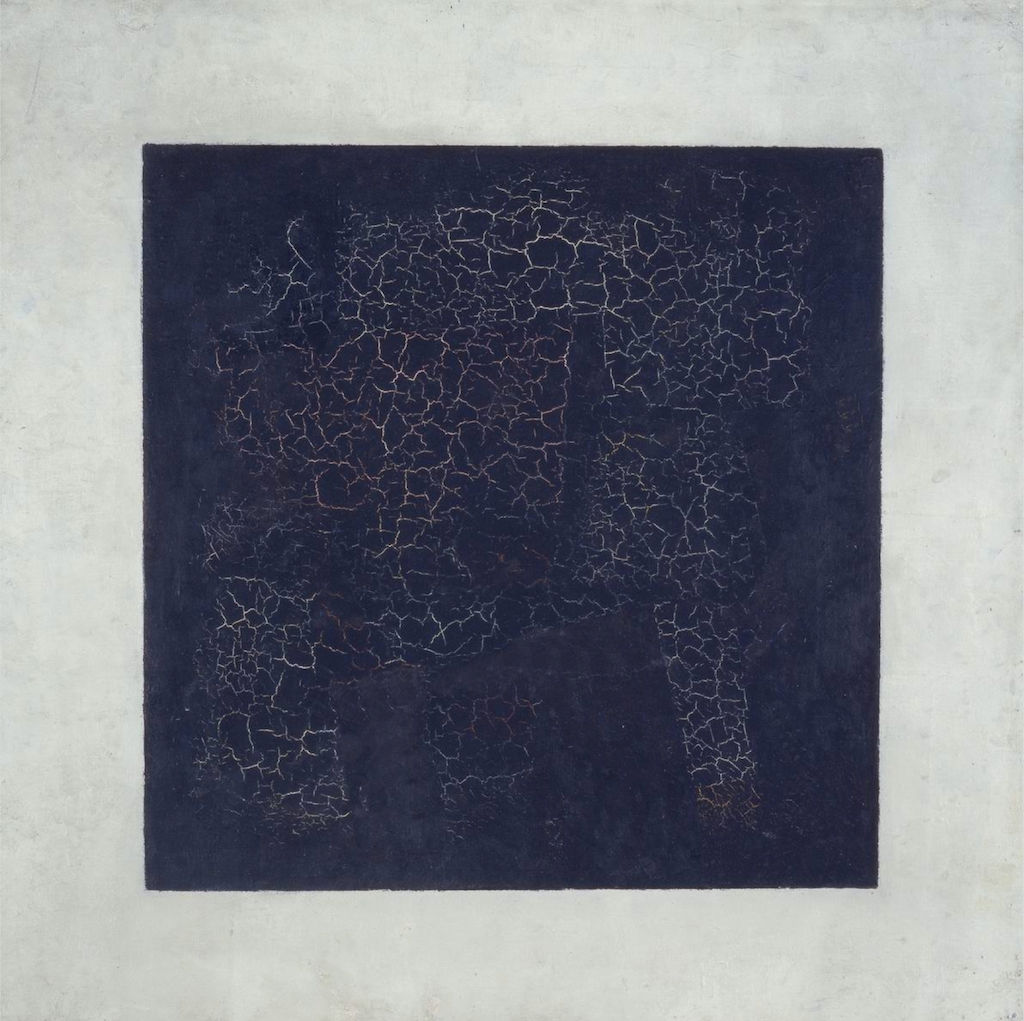
“Black Square” by Kazimir Malevich from 1915
As a member of the Deutscher Werkbund—“German Association of Craftsmen,” a precursory movement to the Bauhaus—the square is often colorful at NOMOS Glashütte too. But it is never simply just red. The watchmaking company has created its own idiosyncratic homage to the square with the Tetra model. Besides the modern typography and delicate lugs, one of the most characteristic features of this watch is its square case: Like the movement of the hands around the dial, most watches are round—but there are also shape watches, which deviate from the “usual” circular form. And aside from the gold model Lux, Tetra is the only shape watch in the NOMOS collection. Straightforward and angular with an edge (or four), Tetra is the answer to the ancient problem of squaring the circle.

Tetra at its most classic, with a white silver-plated dial—in this neomatik version, neon accents add a modern touch.
With its square-shaped case, Tetra may appear slightly more austere than other NOMOS models—but perhaps this is why the NOMOS designers love to add a splash of color to the dial as a playful contrast. Alongside the classic version with a white silver-plated dial, Tetra also comes in champagne gold, azure blue, or, most recently, rich plum. These colors transform each Tetra model into an eye-catching work of art for the wrist—as our Tetra Gallery shows:
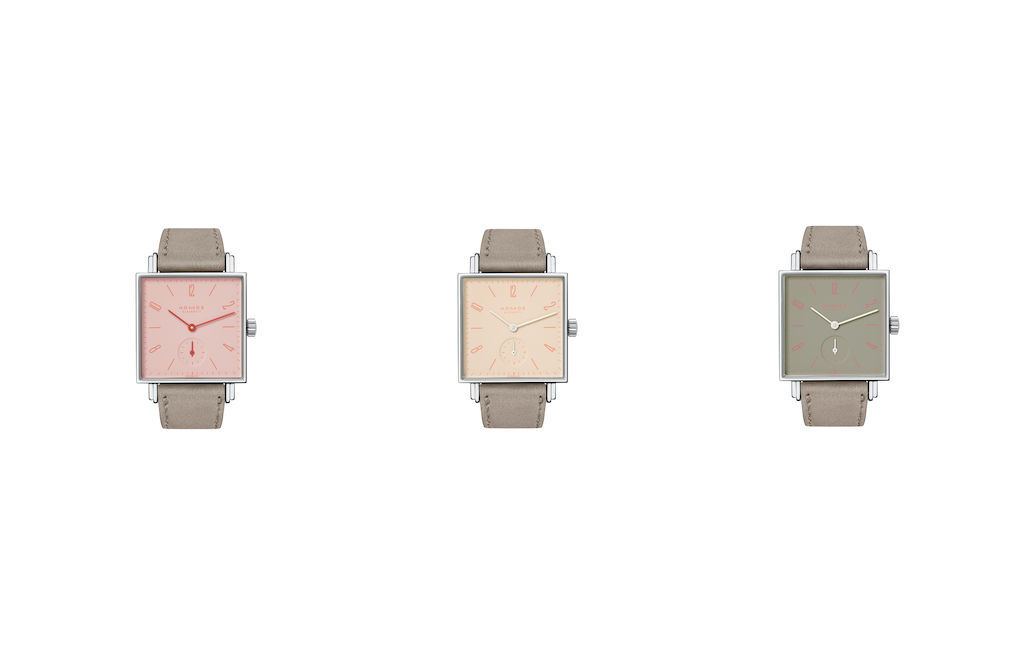
In 2007, NOMOS Glashütte presented sixteen Tetra models at once—in carefully selected tones reminiscent of Bauhaus. Each color harmonized perfectly with the rest, much in the same way that the architect Le Corbusier combined his colors. The Tetra² models are all named after flowers. Here: Tetra Busy Lizzy, Tetra Common Centaury, and Tetra Marsh Thistle.
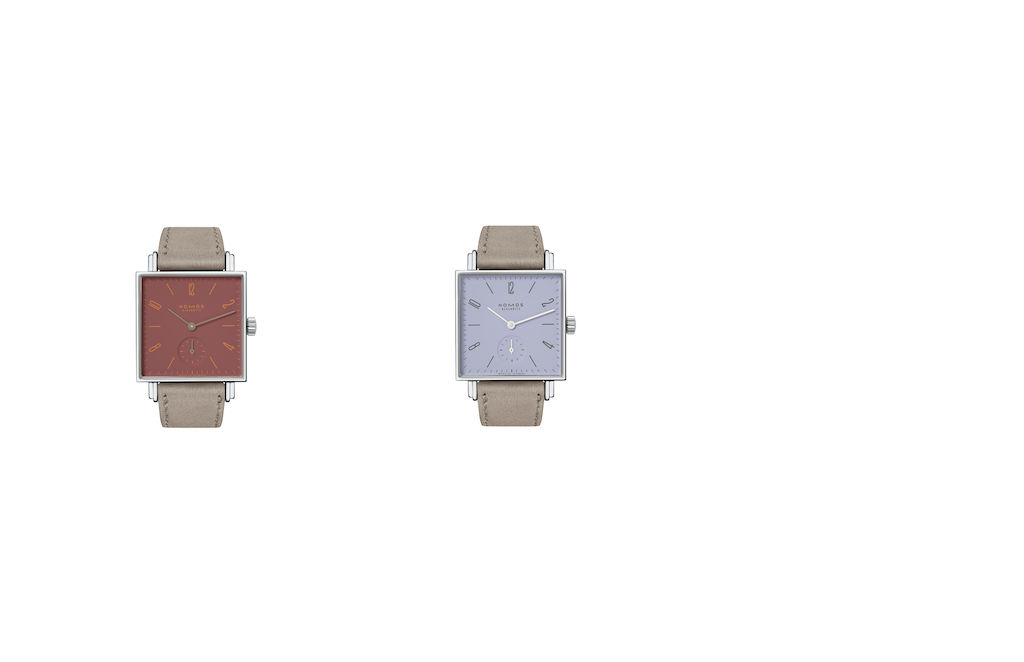
These were followed by the Tetra⁺ series in 2011—featuring models in four new colors and named after mushrooms and berries found in the forest around Glashütte. Here: Tetra Erzgebirgsperle (literally, “Ore Mountain pearl,” a type of cranberry) and Tetra Mäusedorn (Butcher’s Broom).
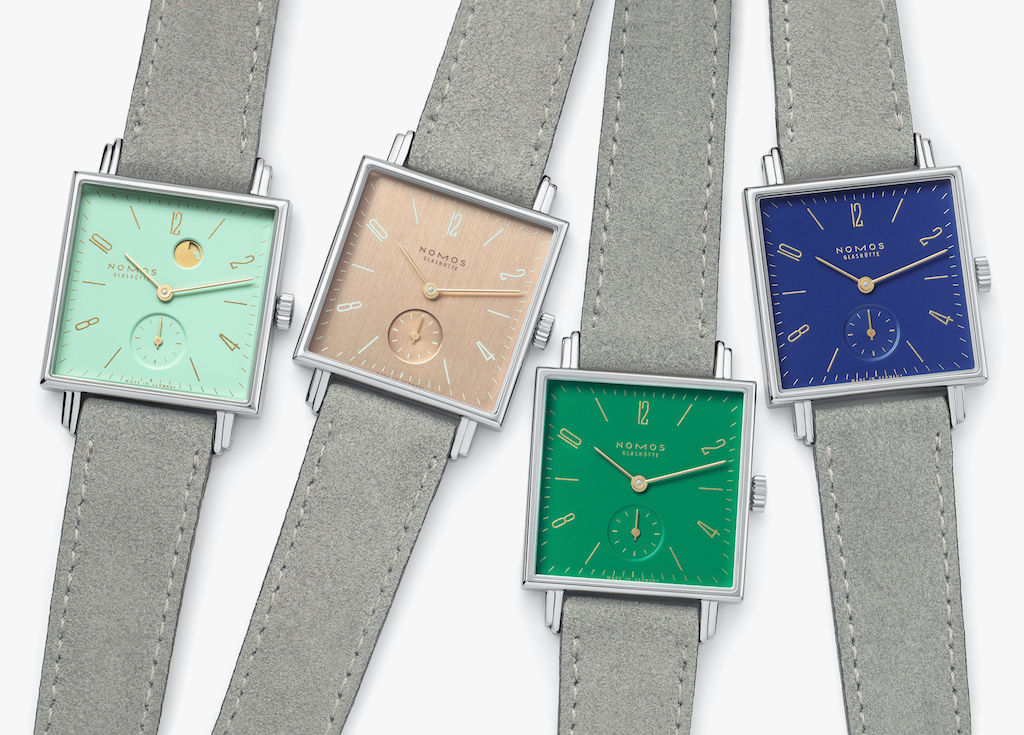
Kleene and Goldelse, Clärchen and Nachtijall: In 2014, four new versions of the square NOMOS classic arrived, with names taken from various aspects of Berlin culture.* This collection features square dials in a bold turquoise, enticing gold, billiard table green, and elegant midnight blue.
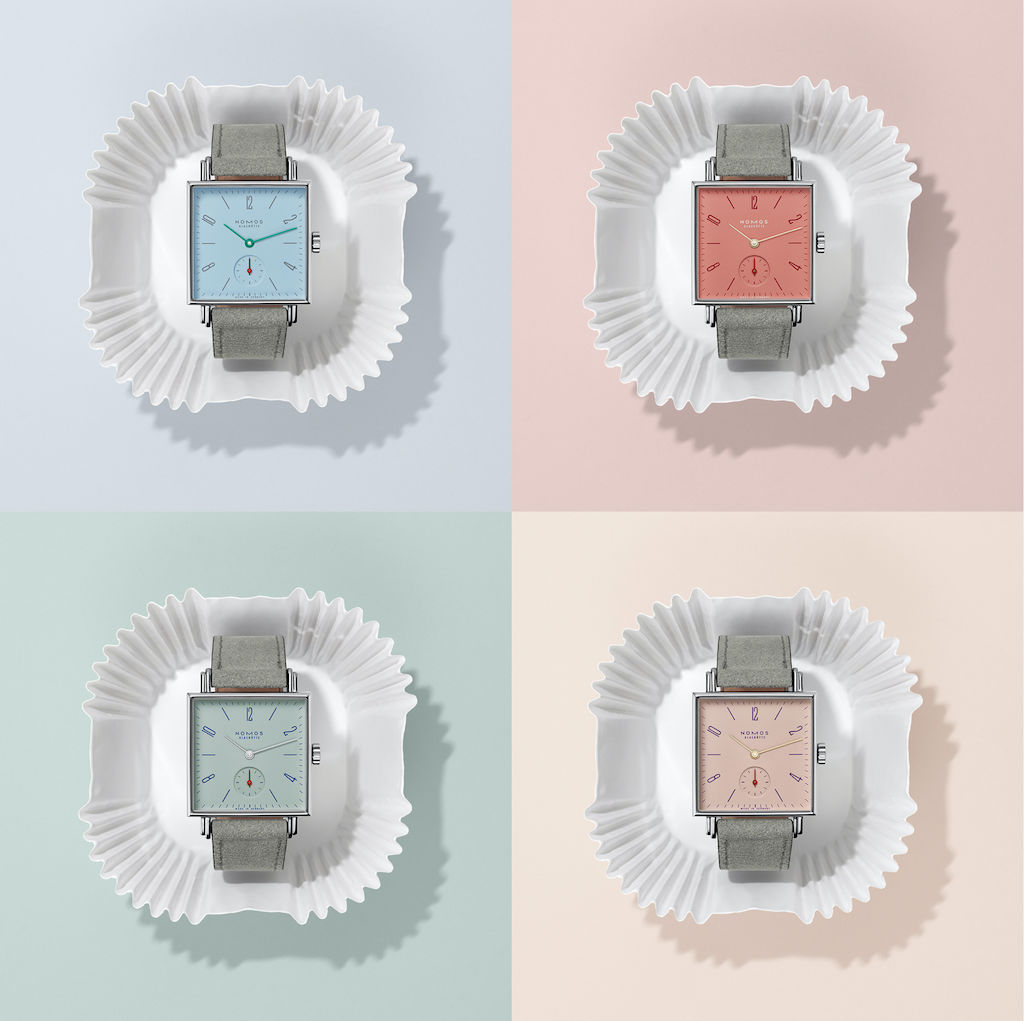
The Petit Four series (2018)—consisting of Tetra Grenadine, Pearl, Azure, and Matcha—guarantees a most appetizing wrist. Despite sharing their name with the classic bite-sized French cakes, these four Tetra models are sadly not as suitable for eating.
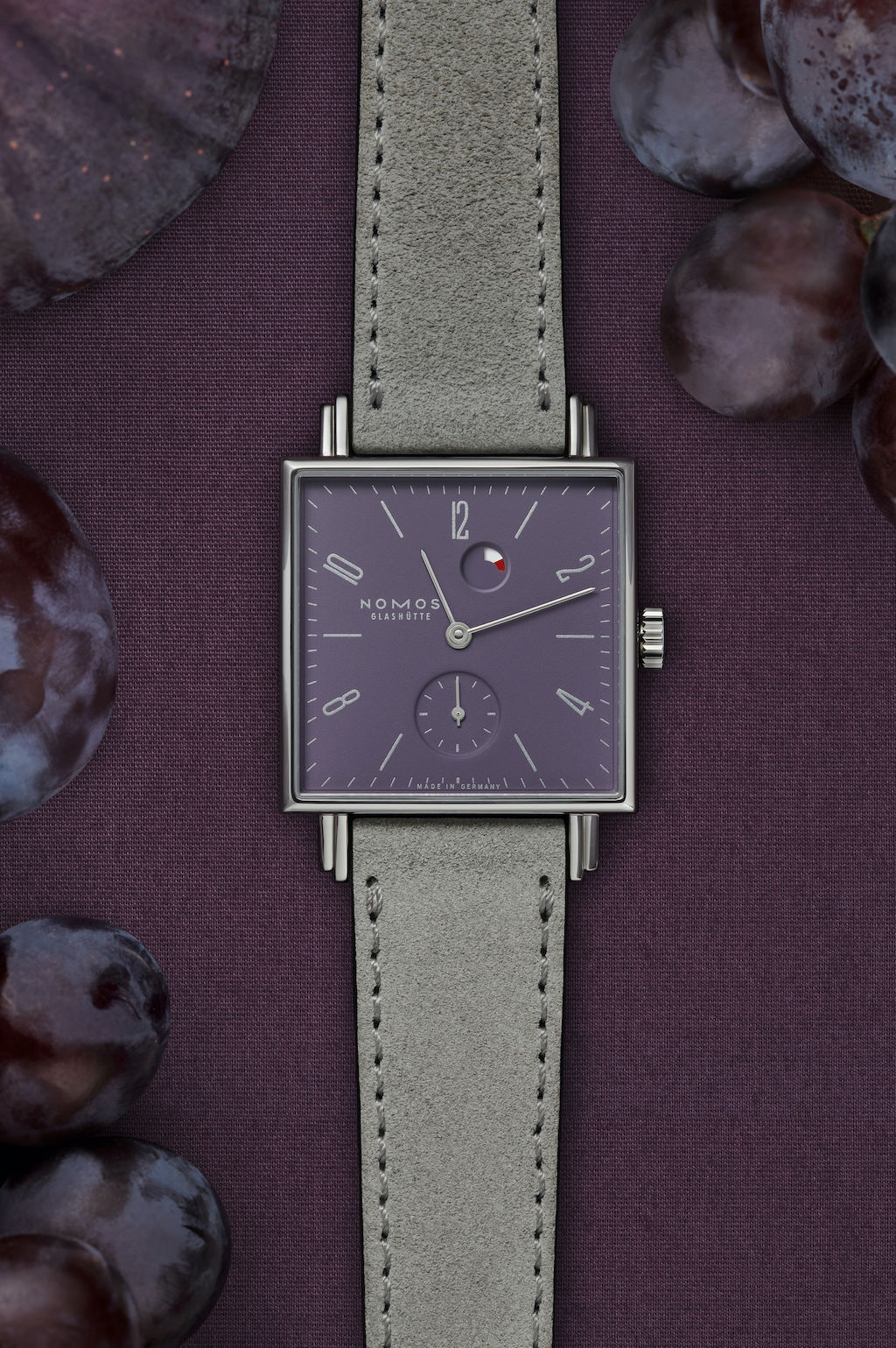
Finally, ripe for the wrist and new this fall: Tetra plum. In honor of the harvest season, the dial of this version of the angular NOMOS classic comes in a rich shade of purple—and you can find more about this new release here.
PUBLICATION DATE: October 2019
TEXT: NOMOS Glashütte
IMAGES: 1. NOMOS Glashütte/Peter Langer, 2. Kazimir Malevich, 1915, Black Suprematic Square, oil on linen canvas, 79.5 × 79.5 cm, Tretyakov Gallery, Moscow, 3.–9. NOMOS Glashütte/Holger Wens, 10. NOMOS Glashütte/Foto: Christian Hagemann/Set design: Sarah Illenberger, 11. NOMOS Glashütte/Malte Bartjen
